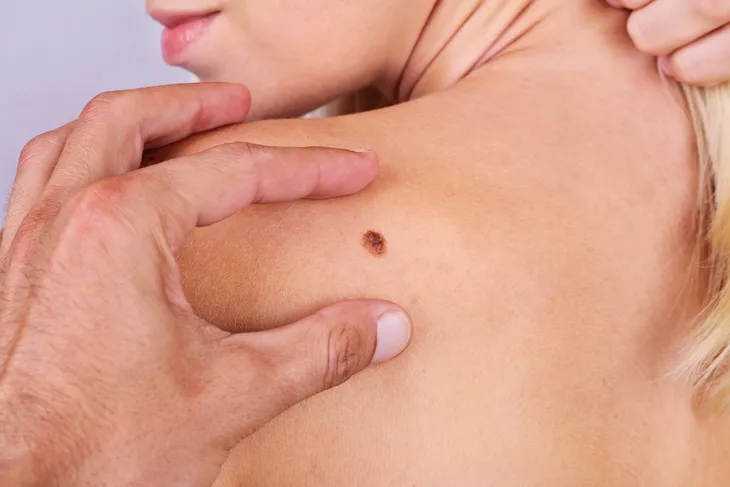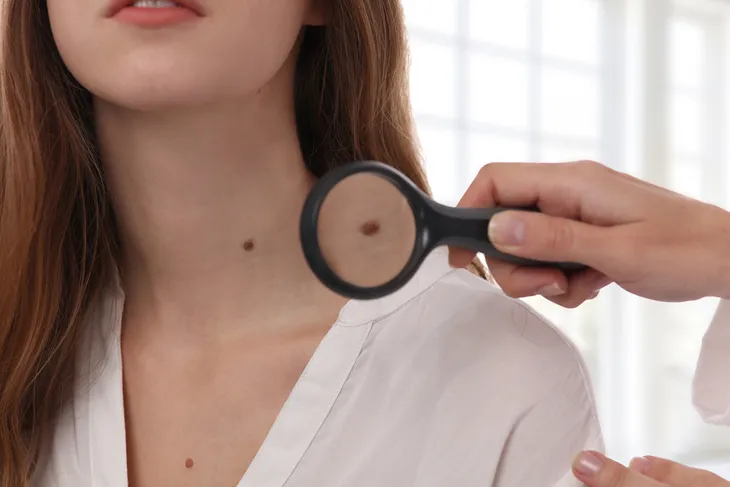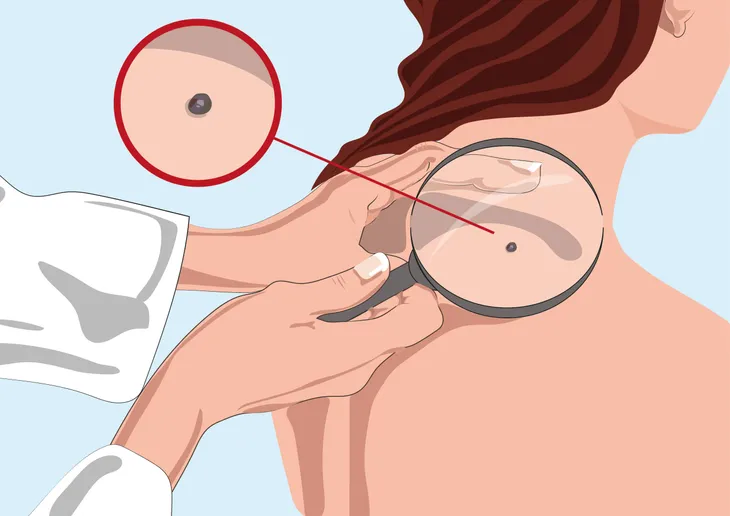Skin cancer is one of the most common cancers. According to the American Cancer Society, Melanoma accounts for about 1-percent of skin cancers, but is responsible for a large number of skin cancer deaths. The estimates for melanoma in the U.S. for 2020 are about 100,350 new melanomas will be diagnosed and about 6,850 people are expected to die of melanoma.
Melanoma is cancer of the pigment producing cells in our skin, eyes, and hair. It can be fatal as unlike the common skin cancers, such as basal cell or squamous cell skin cancer, melanoma are more likely to spread (or metastasize) to other areas of the body — such as the blood vessels or lymphatic system. Melanoma usually presents as atypical mole, but if left untreated will metastasize and cause systemic symptoms, including these 6…
Changes in Skin Shape, Color or Texture
In the earliest stages, melanomas tend to appear as a new skin growth that alters the shape, color, or texture of unblemished skin (i.e., a bruise-like mark or wart that won’t heal or a dark streak under a toenail). These changes can take place quickly within weeks or gradually change over months.
Transforms Existing Moles
Melanomas can also impact the shape, color, or size of an existing mole or birthmark. Typically, a melanoma will appear on the upper back if you are male or on the legs if you are female. However, the body can grow a melanoma on the fingernail and toenail beds, on the soles of the feet, palms, face, scalp, neck, and in some rare instances within the ears, mouth, rectum, eyes, or genital mucosa.
Irritation and Bleeding
Bleeding, tener, and non healing sores on the skin can suggest skin cancer. Although these are more commonly seen with non-melanoma skin cancer, any irritation or bleeding spot should be evaluated by a dermatologist.
ABCDE System of Identification
ABCDE is a 5-point identification system used to help identify changes in potentially dangerous moles and skin growths. It stands for:
- Asymmetry—lack of mirror image of the other side
- Border—irregular or blurred edges
- Color—variations in color such as different shades of brown, red, grey, and blue
- Diameter—calls into question moles larger in size than a standard pencil eraser or 6-mm
- Evolution—any aggressive changes in size, shape, surface, color, and discomfort of a mole or skin growth
Swollen Lymph Nodes
Rarely melanoma can present initially as a metastatic lymph node with no obvious skin findings. Lymph nodes greater than 1-cm in size that persist for more than three months with no obvious history of infection or skin conditions should be brought to the attention of your doctor immediately.
Common Risk Factors
Even though a melanoma is difficult to predetermine, the following common risk factors are considered major melanoma influencers:
- A family history of melanomas
- Fair skin prone to sunburn and blistering
- Residing in a sunny, hot climate at high altitude
- Light blonde or red hair
- Light blue or green eye color
- Greater than 50 moles
- Frequent sun tanning or using tanning beds
- A low immune system









